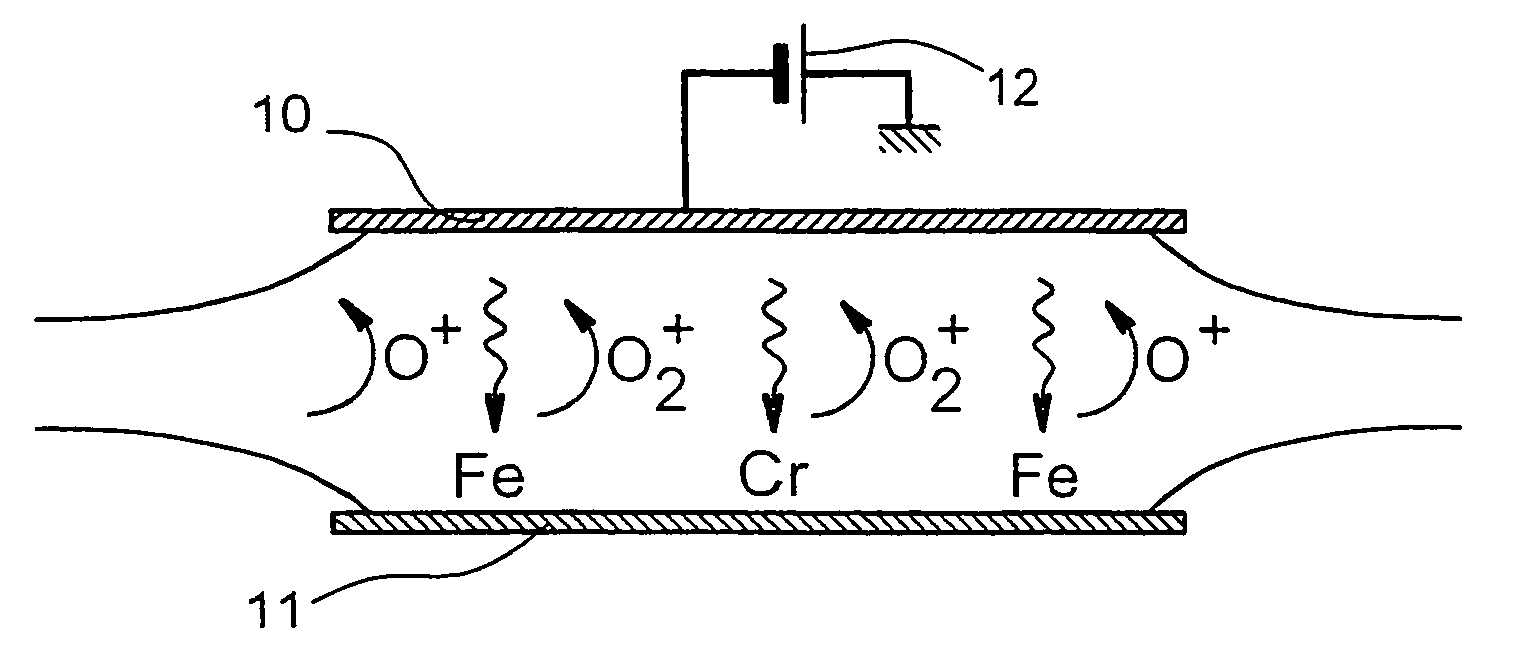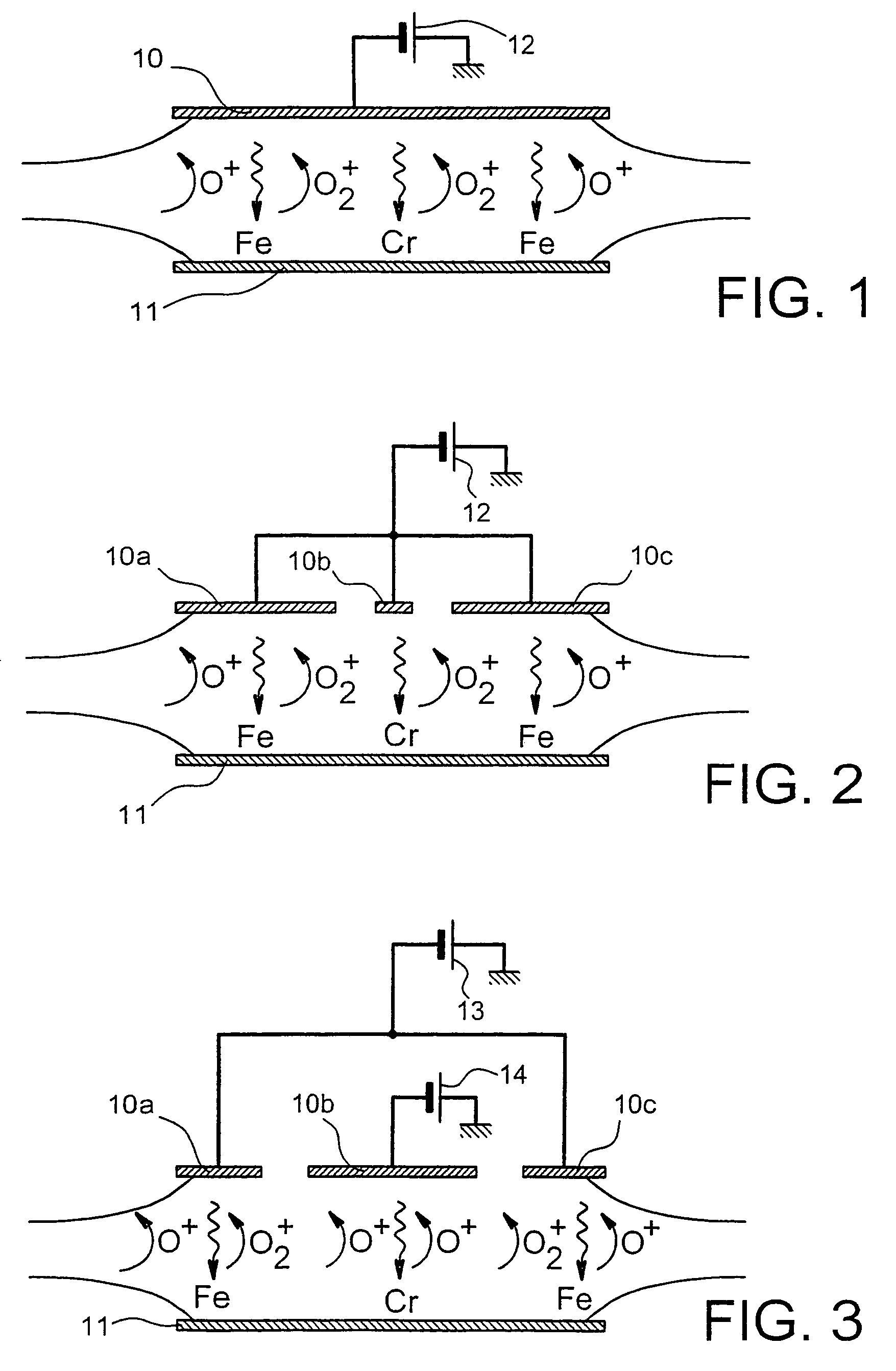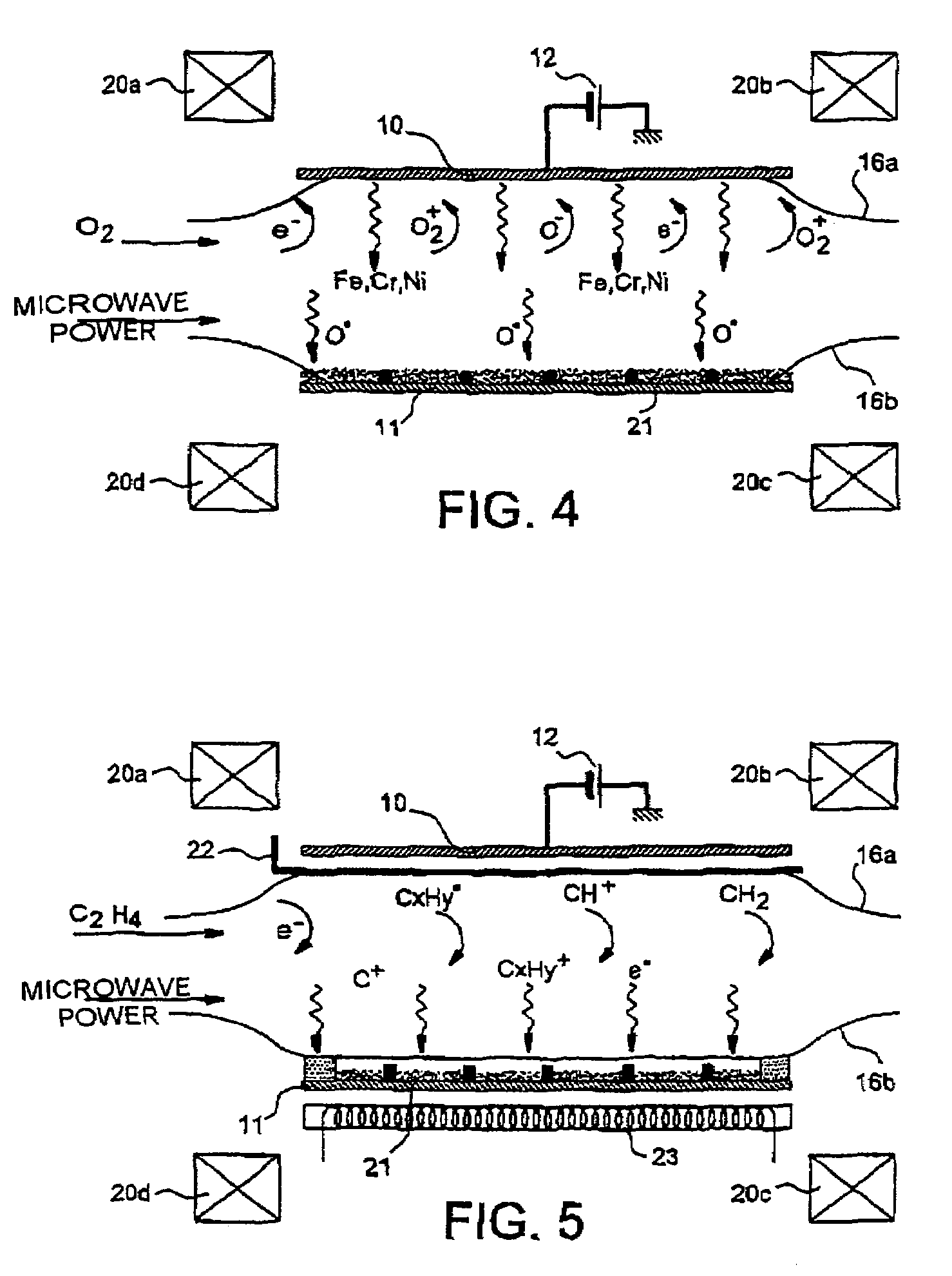Method of synthesising and growing nanorods from a metal carbide on a substrate, substrates thus obtained and applications thereof
a metal carbide and nanorod technology, applied in the direction of crystal growth process, ion implantation coating, chemical vapor deposition coating, etc., can solve the problem of nanotubes that are not attached to any substrate, inability to produce nano-objects of the type of nanotubes or nanorods over large areas, and inability to use these processes. achieve the effect of high degree of gas dissociation
- Summary
- Abstract
- Description
- Claims
- Application Information
AI Technical Summary
Benefits of technology
Problems solved by technology
Method used
Image
Examples
example 1
Synthesis of Chromium Carbide Nanorods on Silicon
[0112]Chromium carbide nanorods were synthesized on silicon substrates using, for the three steps a), b) and c), an ECR microwave plasma source with high magnetic confinement, similar to that described in document [11].
[0113]The operating conditions were the following:[0114]step a): sputtering of a metal target by an oxygen plasma:[0115]target used: austenitic stainless steel composed of 68% Fe, 18% Cr and 14% Ni[0116]target bias: −400 V[0117]oxygen pressure: 2×10−4 mbar[0118]sputtering time: 20 minutes[0119]thickness of the nanocrystal layer thus deposited:≈50 nm;[0120]step b): reduction by a hydrogen plasma:[0121]hydrogen pressure: 1.5×10−3 mbar[0122]substrate temperature: 500° C.[0123]reduction time: 10-20 minutes;[0124]step c): growth by an ethylene plasma:[0125]microwave power: 50-150 watts for a frequency of 2.45 GHz[0126]ethylene pressure: 10−3−3 ×10−3 mbar[0127]substrate temperature: 640° C.[0128]growth time: 10-30 minutes.
[01...
example 2
Synthesis of Chromium Carbide Nanorods on a Stainless Steel Grid
[0132]Chromium carbide nanorods were synthesized on a substrate consisting of a stainless steel grid, also using, for the three steps a), b) and c), an ECR microwave plasma source with high magnetic confinement, similar to that described in document [11].
[0133]The operating conditions were the following:[0134]step a): sputtering of a metal target by an oxygen plasma:[0135]target used: austenitic stainless steel composed of 68% Fe, 18% Cr and 14% Ni[0136]target bias: −400 V[0137]oxygen pressure: 2×10−4 mbar[0138]sputtering time: 20 minutes[0139]thickness of the nanocrystal layer thus deposited:≈50 nm;[0140]step b): reduction by a hydrogen plasma:[0141]hydrogen pressure: 3×10−3 mbar[0142]substrate temperature: 550° C.[0143]reduction time: 10 minutes;[0144]step c): growth by an ethylene plasma:[0145]microwave power: 50 watts for a frequency of 2.45 GHz[0146]ethylene pressure: 3×10−3 mbar[0147]substrate temperature: 620° C....
PUM
| Property | Measurement | Unit |
|---|---|---|
| voltage | aaaaa | aaaaa |
| voltage | aaaaa | aaaaa |
| pressure | aaaaa | aaaaa |
Abstract
Description
Claims
Application Information
 Login to View More
Login to View More - R&D
- Intellectual Property
- Life Sciences
- Materials
- Tech Scout
- Unparalleled Data Quality
- Higher Quality Content
- 60% Fewer Hallucinations
Browse by: Latest US Patents, China's latest patents, Technical Efficacy Thesaurus, Application Domain, Technology Topic, Popular Technical Reports.
© 2025 PatSnap. All rights reserved.Legal|Privacy policy|Modern Slavery Act Transparency Statement|Sitemap|About US| Contact US: help@patsnap.com



